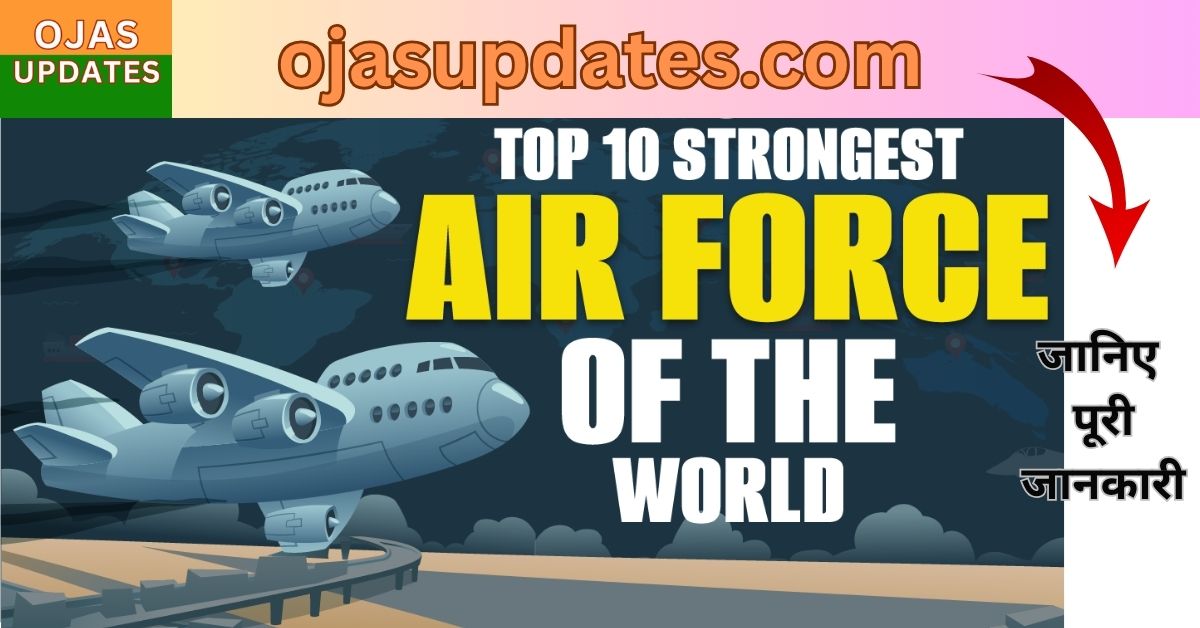When we think of military power, one of the most crucial components to consider is air superiority. Air forces around the world are the backbone of modern warfare, combining cutting-edge technology, strategic planning, and elite pilots. In the race for global supremacy, countries with the most advanced and capable air forces hold a significant advantage. Here’s a look at the top 10 air forces in the world today, highlighting their strength, technological prowess, and key capabilities.
1. United States Air Force (USAF)
The United States Air Force remains the most powerful and technologically advanced air force globally. With over 5,300 aircraft in service, including fighters, bombers, reconnaissance, and transport planes, the USAF is a dominant force in both conventional and strategic warfare. Its fleet includes the stealthy F-22 Raptor and F-35 Lightning II fighters, B-2 Spirit and B-52 Stratofortress bombers, and a variety of drones and reconnaissance aircraft. The USAF also boasts the world’s largest fleet of aerial refueling tankers, which ensures its global reach.
The USAF’s unparalleled resources allow for rapid deployment and sustained operations anywhere in the world. Additionally, it plays a critical role in space and cyber warfare, and its robust intelligence capabilities give it a significant edge in modern combat.
2. Russian Air Force
With a long-standing legacy of aviation excellence, Russia’s air force is considered one of the most formidable in the world. The Russian Air Force has approximately 3,500 aircraft, including a mix of fighters, bombers, and surveillance planes. Among the most notable are the Sukhoi Su-35 and Su-57 stealth fighters, which are considered among the most advanced in the world. Russia’s MiG-29 and MiG-31 interceptors also contribute to the country’s air defense network.
Additionally, Russia’s air force plays a crucial role in regional dominance and has been actively involved in conflicts such as the Syrian Civil War. The Air Force has been increasingly modernizing its fleet with advanced technologies, including next-generation aircraft, long-range missile systems, and upgraded air defense systems.
3. Chinese Air Force (PLAAF)
The People’s Liberation Army Air Force (PLAAF) has rapidly grown in both size and capability in recent years. China has an estimated 3,000 aircraft in service, including advanced fighters like the J-20 Mighty Dragon, which is one of the most sophisticated stealth fighters in the world. Other key aircraft include the J-10, J-11, and J-16 multi-role fighters.
China’s air force also focuses heavily on missile defense and electronic warfare, and its increasing technological innovations reflect its ambition to match the US and Russia in terms of air superiority. The rapid modernization of China’s air capabilities has made it a key player in regional and global security.
4. Indian Air Force (IAF)
The Indian Air Force is one of the largest in the world, with a fleet of over 2,000 aircraft. The IAF has a diverse arsenal, including the Sukhoi Su-30MKI, Rafale, and Tejas fighters, as well as a strong fleet of transport planes, helicopters, and drones. India has been steadily upgrading its air force, incorporating advanced fighter jets and improving its strategic reach.
The IAF’s role is critical in defending India’s vast borders and maintaining air superiority in South Asia. Its ability to conduct both offensive and defensive operations in a variety of terrains—from the Himalayas to the deserts—makes it a highly versatile and formidable force.
5. Royal Air Force (RAF) – United Kingdom
The Royal Air Force has a long and distinguished history, and while its size has shrunk over the decades, its capabilities remain top-tier. The RAF operates over 800 aircraft, including advanced fighters like the Eurofighter Typhoon and F-35B Lightning II. It also has a strong fleet of transport planes, refueling tankers, and surveillance aircraft.
The RAF’s global reach and ability to project power are underpinned by its sophisticated air defense systems, intelligence capabilities, and specialized training. With continued modernization efforts, including the introduction of new stealth fighters and drones, the RAF remains a key player in NATO operations and international peacekeeping.
6. French Air Force (Armée de l’Air)
France’s air force, known as the Armée de l’Air, is highly regarded for its efficiency and versatility. With around 1,200 aircraft, the French Air Force operates advanced fighters like the Dassault Rafale, Mirage 2000, and A400M transport aircraft. The Rafale is especially notable for its multi-role capabilities, excelling in air-to-air combat, ground attack, and reconnaissance missions.
The Armée de l’Air is also a key contributor to NATO and EU defense initiatives and has a long history of participating in global peacekeeping missions. France’s emphasis on technological innovation and military collaboration ensures its place among the world’s top air forces.
7. Israeli Air Force (IAF)
The Israeli Air Force is renowned for its combat capabilities and technological innovation, despite its smaller size compared to some of the larger powers. With roughly 600 aircraft, the IAF operates a combination of advanced fighters like the F-35I Adir, F-16, and F-15 aircraft. It is famous for its precision strikes, aerial defense, and intelligence operations.
The IAF has played a pivotal role in Israel’s security, conducting successful operations in multiple conflicts and safeguarding its airspace. Israel’s air force is also at the forefront of drone technology and cyber warfare, maintaining a strategic advantage in the Middle East.
8. Japanese Air Self-Defense Force (JASDF)
Japan’s air force, known as the Japan Air Self-Defense Force (JASDF), is one of the most technologically advanced in Asia. With over 300 aircraft, including the F-15J, F-2, and F-35A, the JASDF is well-equipped to handle both defensive and offensive missions. Japan’s focus on defense and regional security, combined with a robust air surveillance network, ensures its dominance in the Pacific region.
Japan also relies on a highly trained workforce and maintains close military ties with the United States, which bolsters its operational effectiveness.
9. South Korean Air Force (ROKAF)
The Republic of Korea Air Force (ROKAF) has seen rapid advancements in recent years. With more than 700 aircraft, including F-35s, F-15Ks, and the KF-21 Boramae, South Korea has built a formidable air force. Its ability to counter regional threats, especially from North Korea, is bolstered by cutting-edge technology, including integrated missile defense systems.
South Korea’s air force focuses on air superiority, ground attack, and reconnaissance, making it one of the most modern forces in the Asia-Pacific region.
10. Turkish Air Force (THK)
The Turkish Air Force is an increasingly powerful force in the Middle East and NATO. With a fleet of around 1,000 aircraft, including F-16s, F-4 Phantoms, and the Hürkuş light aircraft, Turkey has focused on both defense and offensive air operations. The Turkish Air Force has been actively modernizing its fleet with advanced fighters and drones, and it is increasingly involved in regional power dynamics.
Turkey’s strategic location at the crossroads of Europe and Asia makes its air force vital for regional security, with operations often extending into Europe, the Middle East, and Central Asia.
Conclusion
These top 10 air forces represent the powerhouses of modern military aviation. Each one plays a crucial role in its nation’s defense and global power projection. From the advanced stealth capabilities of the United States and Russia to the precision strikes of Israel and the regional dominance of China and India, these air forces are a testament to the technological innovations and strategic thinking that define 21st-century warfare. As global conflicts evolve, so too will the capabilities of these air forces, ensuring their continued place at the forefront of military power.

